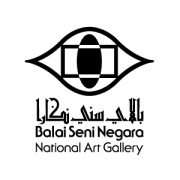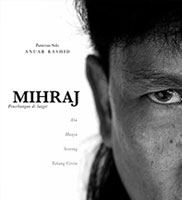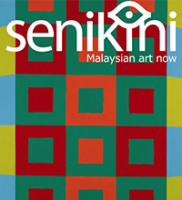|
INTRODUCTION
Eric Peris was born in 1939, Johor Bharu. Eric Peris first learnt of art from his father, the royal portrait painter, O Don Peris. O Don Peris was a prolific painter and was among Eric first introduction to arts.
An Interview with Eric denotes a story between him and O Don that bring lights to the beginning of Eric’s journey in art through photography. According to Eric, O Don Peris had once cited that to be a great painter is through the mastery of color. Once that is achieve, a good painting is not far from reach.
However, Eric’s main interest in the arts had skewed more towards photography and thus O Don advised differed slightly.
Eric narrates that to O. Don, producing a good photography work has its own share of difficulty, despite the reality that a photograph can be made with a fraction of the time than the medium of painting, for the work to matter, it has to be original, and provide its own meaning, narrative and justification of its subjects.
Therefore, O Don believed if photography is learnt or taught it may not truly signify the photographic practice of the artist, or may proof difficult to differentiate from one another because of a patterned style. In addition to the fact Eric also believed that it is optimum to understand great art, it is good to learn from artists to understand their thinking, objectives and product. However, to produce a truly unique work one must understand and explore the ideas, medium and subject to own it. Eric had also accredited that his compositional skills are something that he learnt from his mother, who is also a painter named Dona Peris.
In light of the advice, tested through his years of practices, Eric had advocated the simple fact that a work of photography is best learnt on one own merit, bested through an autodidact means balancing knowledge and exploration as a learning curve to produce good photographic art which does not necessitate a certain equipment, for the most important part of the work, he believed, is the intent & idea that an artist or photographer wants to portray.
SELECTED FIELD EXPERIENCE & CONTRIBUTIONS
According to the biographical archive of the Art Resource Center, Eric Peris began his career in photography as a photojournalist in 1969 at News Straits Time Singapore, and a year later at News Strait Time Kuala Lumpur in 1970. He had then continued to work as a photojournalist through the 70s for the News Strait Time for a period of 25 years. Between 1991 to 1992, Eric was the photo editor for The News Straits Time until his retirement.
In 1984 to 1991, he was also Co-chairman for the Yearly National Photographic Contest at the National and ASEAN level. Eric also ran a weekly photo column in 1986 for the New Sunday Times special section, entitled Sundate.
From 1987 to 1989 Eric had also ran a photographic circle that hosted monthly outings of photographic program for the NST. He was also consultant and photo co-coordinator for the Trans Borneo Expeditions. In the same year, he had also conducted photojournalism courses for Press, Government and Commercial bodies organized by Malaysian Press Institute and Asian Institute for Development & Communication (AIDCOM)
In 1982, he had represented Malaysia as a delegate for the Asean Symposium of Painting, Photography & Graphic Art in Bangkok.
NOTABLE WORKS
According to the ART RESOURCE CENTER ARCHIVE (ARS), among his notable and prolific works were published under the title ‘’Landscapes- A photographic Study of The Tin Mine Landscape in Malaysia’’ and “Image of Gitanjali’’ a photographic research studying poetry by Rabindranath Tagore and ‘’The Malayan Heritage Homes’’ a study of the development and architectural influence in Malaysia.
|



















